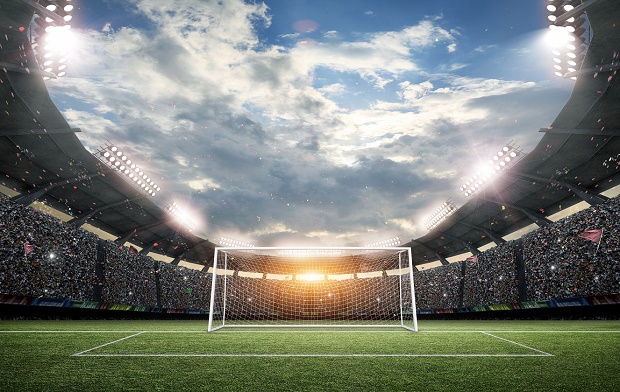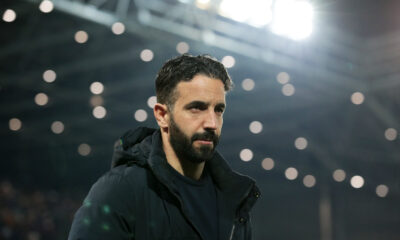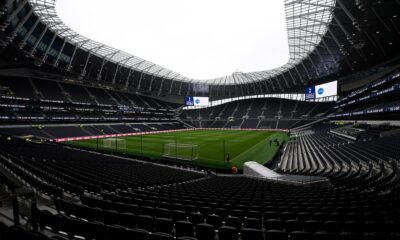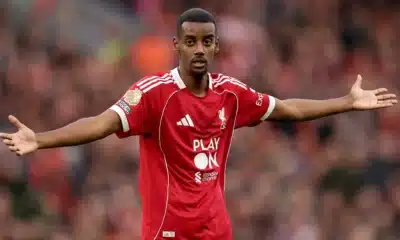Features
Why have World Cup sponsorship revenues dropped by £179 million?
The FIFA World Cup is the pinnacle of football, so why has this year’s tournament struggled to find sponsors?

(Source: Shutterstock)
The FIFA World Cup is the pinnacle of football, so why has this year’s tournament struggled to find sponsors?
The tournament has seen a decrease in the number of sponsors from the 2014 World Cup in Brazil. The sponsorship revenues for the 2018 World Cup are down by £179 million on 2014, which equates to 10% of 2014’s revenues.
Despite the difficulties in securing sponsors, the hosts, Russia, got off to a great start in the opening match of the tournament, thrashing Saudi Arabia 5-0. They followed that result up with a 3-1 win over Egypt to guarantee progression from group A. In the latest World Cup betting odds, you can get Russia to go all the way and win the World Cup for the first time at 50/1.
We’ve taken a look at the major events in the build-up to the World Cup which resulted in the 2018 tournament struggling to secure sponsors.
2015 Corruption Scandal
In 2015, football’s governing body, FIFA, became embroiled in a corruption scandal after the U.S. Department of Justice indicted some of the organisation’s top executives.
There have been rumours of corruption within the organisation for decades and the awarding of the 2018 and 2022 World Cups to Russia and Qatar respectively did nothing but intensify those rumours.
Despite allegations of unfair World Cup bids, it was actually the alleged bribes and kickbacks in the selling of marketing and media rights that were the reason for the US’ intervention.
The Aftermath
Following the scandal, FIFA’s ethics committee deposed the president, Sepp Blatter, and banned him from all football related activities for six years.
In order to repair the organisation’s reputation, it has taken steps to prevent future corruption from occurring. The Executive Committee passed reforms such as: presidential term limits, salary transparency and steps to increase the role of women in FIFA.
While these may be positive steps, in the short term there has been major damage to their sponsorship deals: Continental, Johnson & Johnson and Castrol all decided against renewing their sponsorship deals for the World Cup.
Of the eight World Cup sponsors from Brazil, only McDonald’s and Budweiser have remained loyal to FIFA and continue to sponsor the World Cup.
The controversial decision to award the 2022 World Cup to Qatar could see a further reduction in sponsorship, meaning the prize money for the winners in World Cup betting tips will also be reduced.
FIFA Partners
FIFA allows for eight ’FIFA Partners’ which is the gold category of sponsorship with football’s governing body: it gives the partners the biggest exposure in FIFA events.
Only seven of the eight slots FIFA allows for its official partners have been filled. Long term partners Coca-Cola and adidas remained partners with the organisation despite the corruption scandal. Both have been partners for over 40 years, with sportswear giant adidas providing the official match balls for the World Cup since 1970.

South Korean company Hyundai/KIA Motors became an official partner to the organisation in 1999 when it agreed to sponsor thirteen FIFA competitions, including the 2002 World Cup, which was hosted by Japan and South Korea.
In 2007 FIFA and Visa became partners and the financial services corporation holds the exclusive rights to promote its financial services through FIFA competitions until 2022.
Russian energy company Gazprom became a top tier partner shortly before the corruption scandal erupted yet they are still sponsoring the 2018 World Cup. Wanda Group and Qatar Airways took over from Sony and Emirates, who both opted not to renew their contracts in 2014, when the allegations of corruption were engulfing the organisation.
World Cup and Regional Sponsors
World Cup sponsors are the silver category and can have a much shorter association with FIFA. Companies in this category only sponsor one World Cup and one FIFA Confederations Cup unless the deal is renewed after each tournament, although they don’t get as much exposure as the top tier partners do.
From the two previous World Cups, only Budweiser and McDonald’s remain sponsors of the World Cup. Following the 2015 scandal, Castrol, Continental Tyres and Johnson & Johnson all opted not to renew their contracts once they expired.
Hisense, Mengniu and Vivo have taken their places, which shows a shift from the traditional Western companies to the big Eastern businesses in China and Russia.
The bronze category is reserved for the regional sponsors who are companies with roots in the host country. What is most shocking is that of the twenty spaces allocated for this category, only four have been filled.
The four companies who have filled the spaces are: diamond company Alrosa, Russian Railways, private commercial bank Alfa-Bank and long-distance telephone provider Rostelecom.
Future Sponsorship
The corruption scandal has hit the organisation hard and the president, Gianni Infantino, has his work cut out as he tries to save FIFA’s reputation.
With Russia being the less controversial of the two World Cups awarded back in 2010, it will be interesting to see how many sponsors the Qatar 2022 World Cup will have.
As the noticeable shift from Western to Eastern companies sponsoring FIFA begins to show, will it be able to save its reputation and keep a healthy balance of Western and Eastern sponsors? Or will it continue to make controversial decisions that could ultimately result in its own downfall?





















